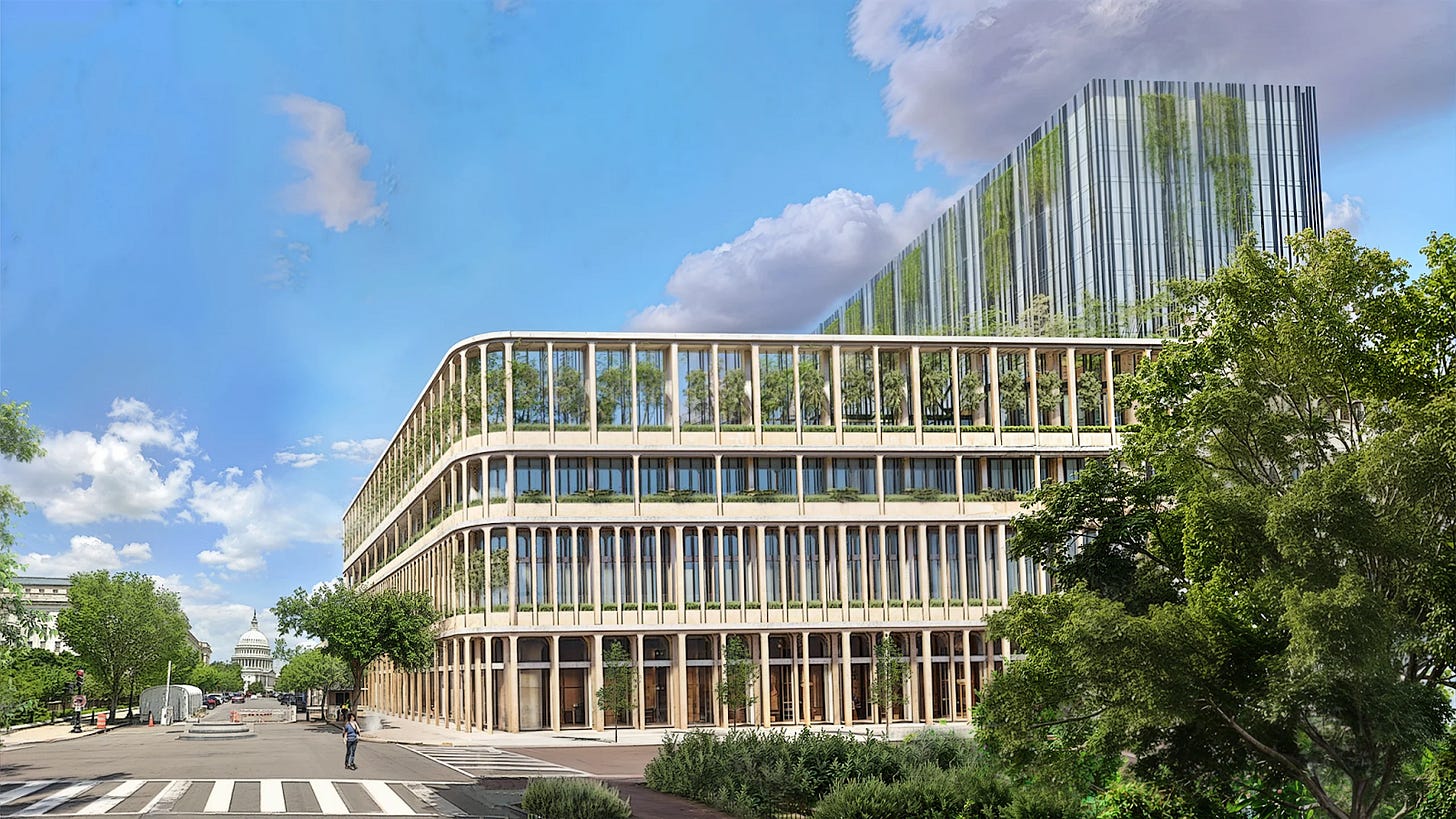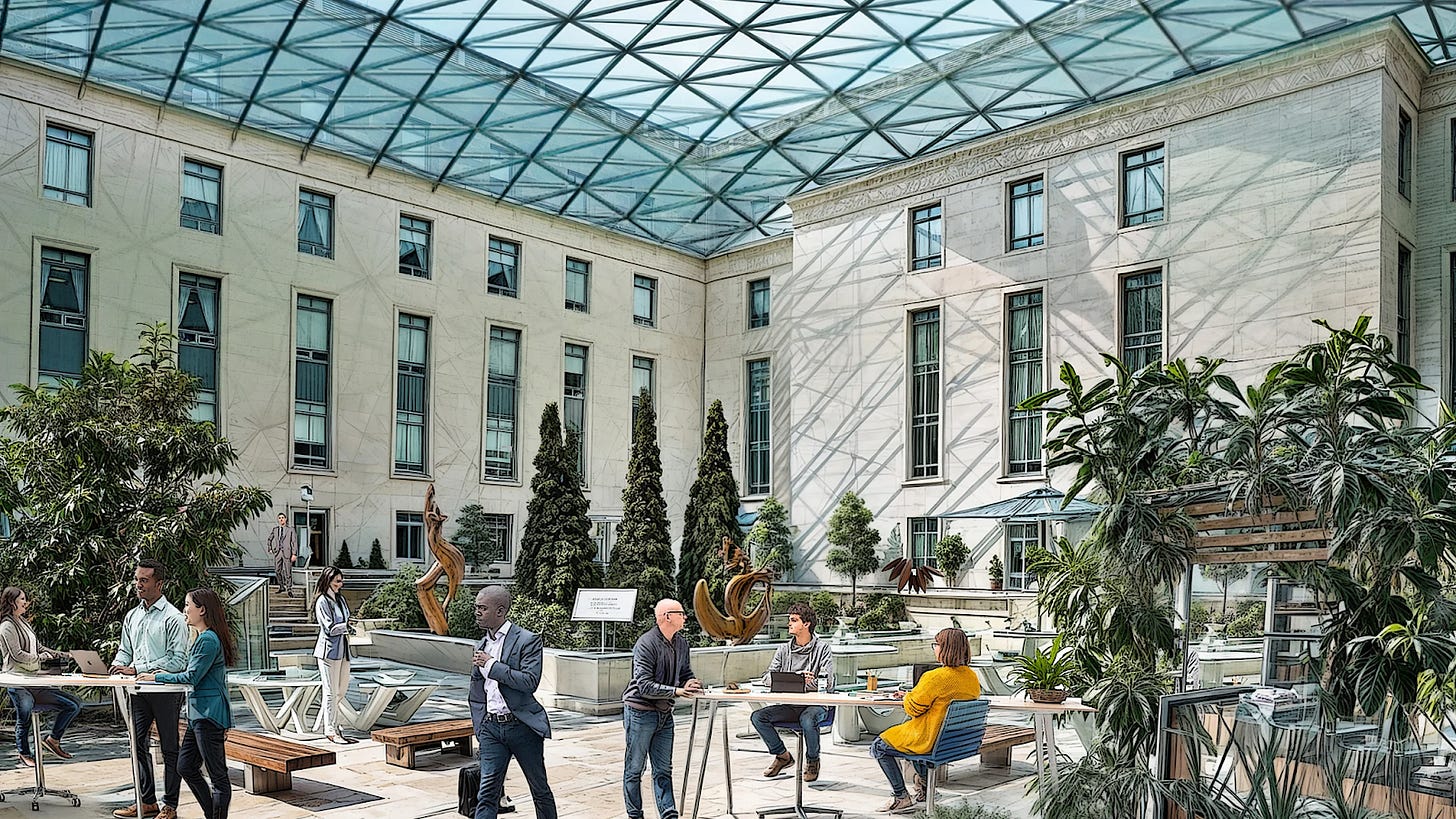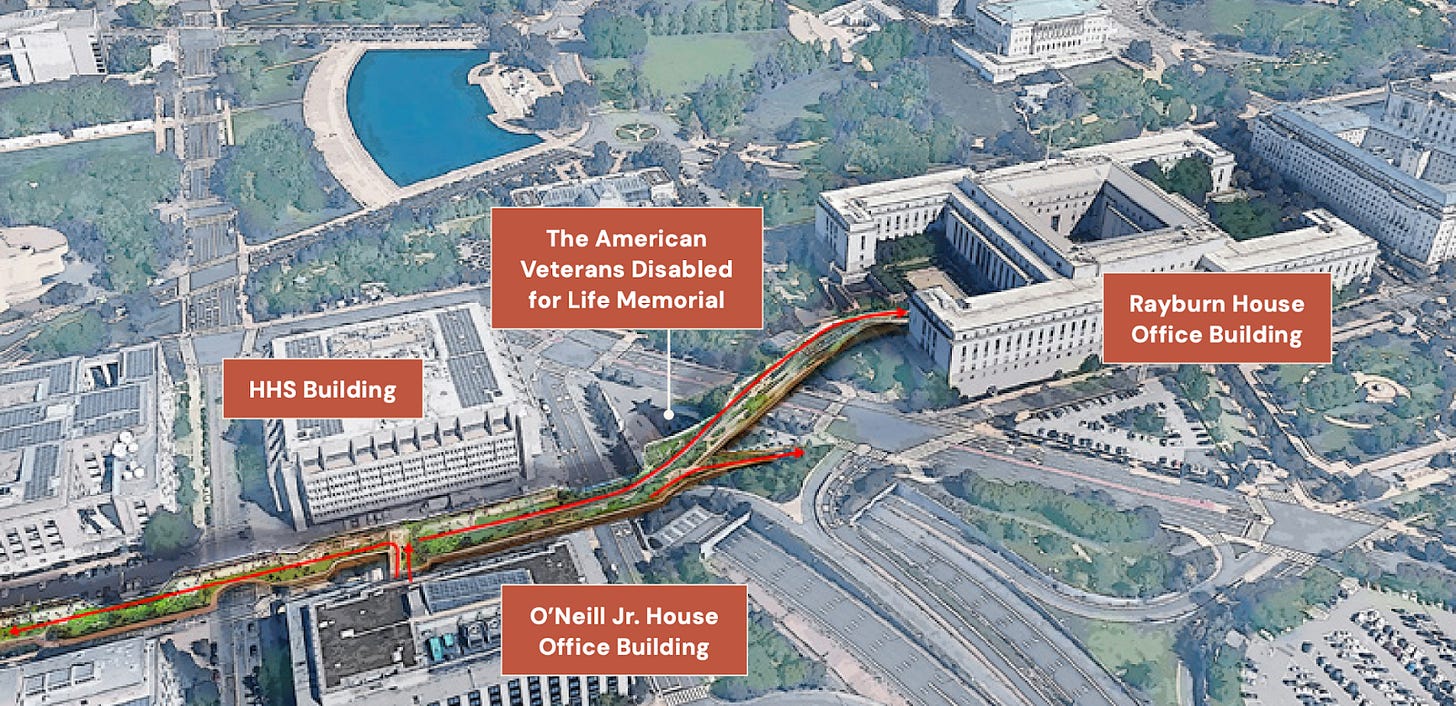Where will they all sit?
An interactive vision for an expanded, modernized House of Representatives
The House of Representatives is stuck. For over 100 years, it’s been frozen at 435 members.
That was not how things were supposed to go. The founders always intended the House to grow along with the country. And many political scientists think they were right — a larger population should have a larger legislature. Yes, the rate of growth should slow over time, but more people need more representation. Otherwise, you risk a serious capacity crunch.
The American Academy of Arts and Sciences studied options for democracy reform in 2020. Their first recommendation: add 150 new House members.
But the question, always, is — where will they all sit? How can an aging Capitol complex already in need of modernization make way for so much new capacity?
Here’s where we do something unusual and tell you to stop reading this newsletter. Because it’s hard to explain what an expanded House and a modernized Congress would look like. You have to see it. So we worked with POPVOX Foundation, a team of designers and social scientists at Firsthand, and various experts and stakeholders on the Hill to create an immersive, interactive vision for how the Capitol Campus could be updated for the 21st Century: Wherewilltheyallsit.org
You can read the backstory to these proposals in Roll Call today.
But seriously, it’s so much better interactive. Click here to immerse.
Why should we expand the House?
…still here?
Ok, well, then let us first explain why many experts argue that expanding the House — counterintuitively — could help revitalize our democracy.
“The number of representatives will be augmented from time to time[.]”
-James Madison, Federalist 55
The founders always envisioned a growing House. (George Washington proposed one member for every 30,000 people, James Madison thought that should eventually grow to one per 50,000. Today’s number is one for every 760,000.)
Unlike the Senate, the House depends on a closer relationship between constituents and politicians, as well as lower barriers to running for office. Both of those get less realistic with larger constituencies. (We’ll also note that proportional representation is more difficult with a smaller House, but that’s a separate issue.)
But in the 1920s, Congress arbitrarily capped the House based on the 1910 census. Since then, the U.S. population has more than tripled, leaving the average Representative to speak for about 760,000 people today — one of the worst ratios among modern democracies.
This imbalance fuels a sense that Congress is disconnected from the country it serves: Today, the majority of people don’t believe Congress cares about the people they represent. Research shows that representatives in smaller districts have more contact with their constituents, and in turn their constituents are more likely to reach out to them and feel like their representative is in touch with them.
Plus, Congress not only serves a growing population, it also oversees the executive branch and administrative state.
When Congress is frozen, its power relative to other branches declines. It lacks the capacity to keep up.
Congress serves a critical oversight role for administrative agencies and the executive branch. It cannot effectively do that if those other parts of the federal government are far bigger and better-resourced.
This was exacerbated in the 1980’s and 90’s when Congress suddenly began shedding staff, reducing its own capacity even as legislation grew more complex. Today, the federal government — including contractors and grantees — employs about 9 million people. But Congress, which is supposed to oversee and govern all of it, is a tiny fraction. The legislative branch in total — including things like the Library of Congress and Congressional Budget Office — employs just around 31,000 people. Less than a third of a percent.
This problem is also going to get worse still. After the Supreme Court struck down Chevron deference — the doctrine that deferred to reasonable agency interpretations of statutes — Congress can no longer delegate its capacity issues to the administrative state going forward.
Congress needs to both modernize and increase its capacity. There’s no way around it.
But where would they all sit?
(Again, all of this is better experienced in a full-color, interactive experience. See the Capitol Campus of Tomorrow.)
Here are the seven ways we could expand and modernize the House of Representatives:
1. Construct a new House Office Building at C St and New Jersey Ave SE.
2. Add seating to the House chamber, including a new mezzanine level.
3. Improve functional outdoor spaces, especially underutilized courtyards and other green spaces.
4. Add flexible coworking spaces for working, socializing, eating, and holding private calls or meetings.
5. Build an east–west elevated pathway between the upper and lower campuses.
6. Design more flexible office suites to allow creative rearrangement and multi-use spaces.
7. Improve wayfinding and accessibility across the campus.
All seven solutions and more: Where will they all sit? Envisioning a modernized workplace for an expanded House of Representatives.
Backstory in Roll Call: A bigger House? First of all, where would everyone sit?
















One of the important of advantages of a larger house is that it could lessen role of money in the process. If districts were small enough that a determined candidate could just quit their job and spend two years attending church picnics, school board meetings, coffee shops, high school sporting events etc so that the majority of active voters would have first hand knowledge of the candidate it could really change the dynamics. Start with the people of the district instead of starting with getting commitments for the advertising money.
Why do we need anything new designed? I believe that representatives should spend more time in their district, doing more work remotely. This would save money, make representation more in line with the district, and reduce lobbying. Maybe they have to go to Washington a few times a year, but they wouldn't require the extensive offices.